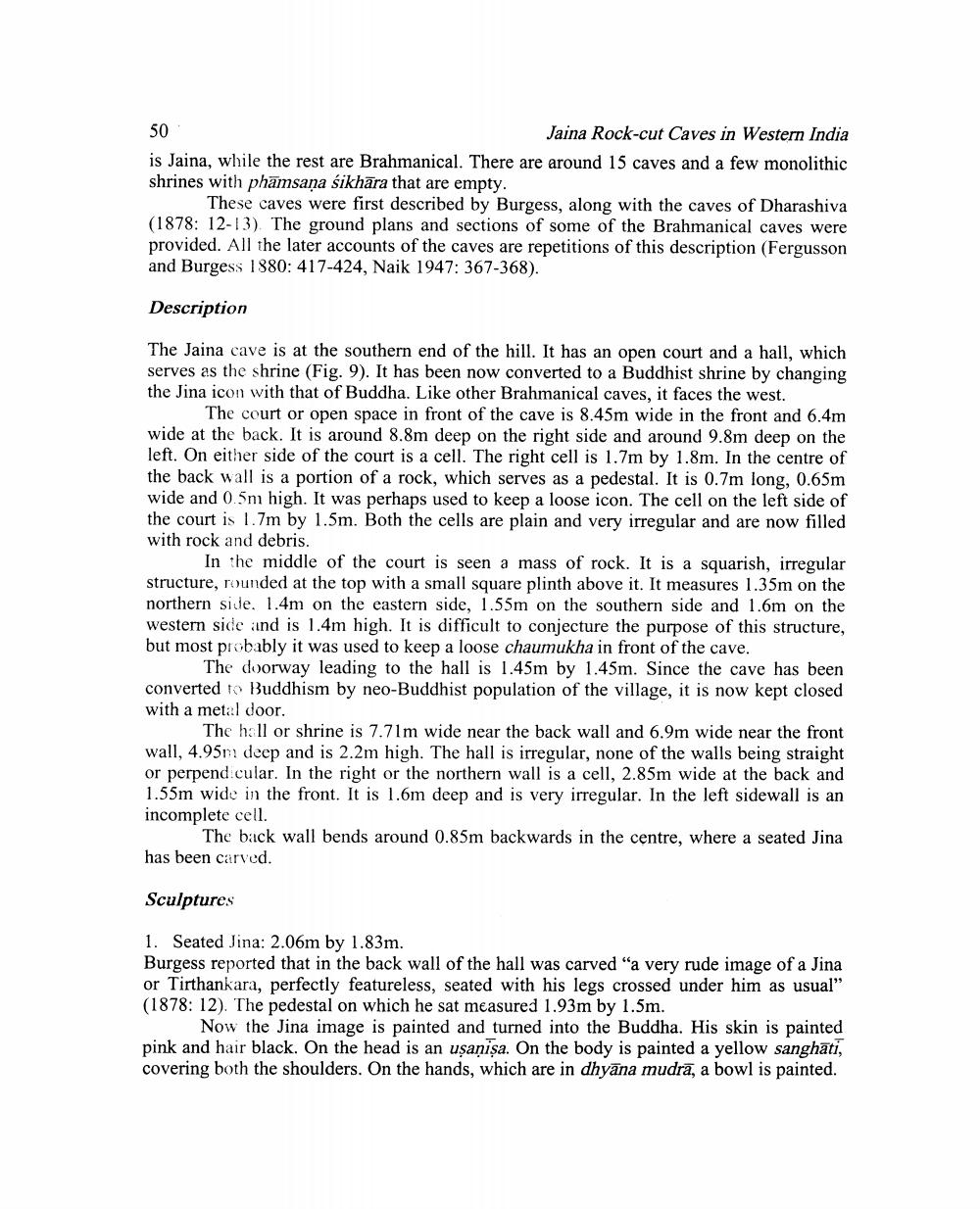________________
50
Jaina Rock-cut Caves in Western India is Jaina, while the rest are Brahmanical. There are around 15 caves and a few monolithic shrines with phamsaņa śikhāra that are empty.
These caves were first described by Burgess, along with the caves of Dharashiva (1878: 12-13). The ground plans and sections of some of the Brahmanical caves were provided. All the later accounts of the caves are repetitions of this description (Fergusson and Burgess 1880: 417-424, Naik 1947: 367-368).
Description
The Jaina cave is at the southern end of the hill. It has an open court and a hall, which serves as the shrine (Fig. 9). It has been now converted to a Buddhist shrine by changing the Jina icon with that of Buddha. Like other Brahmanical caves, it faces the west.
The court or open space in front of the cave is 8.45m wide in the front and 6.4m wide at the back. It is around 8.8m deep on the right side and around 9.8m deep on the left. On either side of the court is a cell. The right cell is 1.7m by 1.8m. In the centre of the back wall is a portion of a rock, which serves as a pedestal. It is 0.7m long, 0.65m wide and 0.5m high. It was perhaps used to keep a loose icon. The cell on the left side of the court is 1.7m by 1.5m. Both the cells are plain and very irregular and are now filled with rock and debris.
In the middle of the court is seen a mass of rock. It is a squarish, irregular structure, rounded at the top with a small square plinth above it. It measures 1.35m on the northern side. 1.4m on the eastern side, 1.55m on the southern side and 1.6m on the western side and is 1.4m high. It is difficult to conjecture the purpose of this structure, but most probably it was used to keep a loose chaumukha in front of the cave.
The doorway leading to the hall is 1.45m by 1.45m. Since the cave has been converted to Buddhism by neo-Buddhist population of the village, it is now kept closed with a metal door.
The hall or shrine is 7.71m wide near the back wall and 6.9m wide near the front wall. 4.95m deep and is 2.2m high. The hall is irregular, none of the walls being straight or perpendicular. In the right or the northern wall is a cell, 2.85m wide at the back and 1.55m wide in the front. It is 1.6m deep and is very irregular. In the left sidewall is an incomplete cell.
The back wall bends around 0.85m backwards in the centre, where a seated Jina has been carved.
Sculptures
1. Seated Jina: 2.06m by 1.83m. Burgess reported that in the back wall of the hall was carved "a very rude image of a Jina or Tirthankara, perfectly featureless, seated with his legs crossed under him as usual" (1878: 12). The pedestal on which he sat measured 1.93m by 1.5m.
Now the Jina image is painted and turned into the Buddha. His skin is painted pink and hair black. On the head is an uşaņişa. On the body is painted a yellow sanghāti, covering both the shoulders. On the hands, which are in dhyāna mudrā, a bowl is painted.




